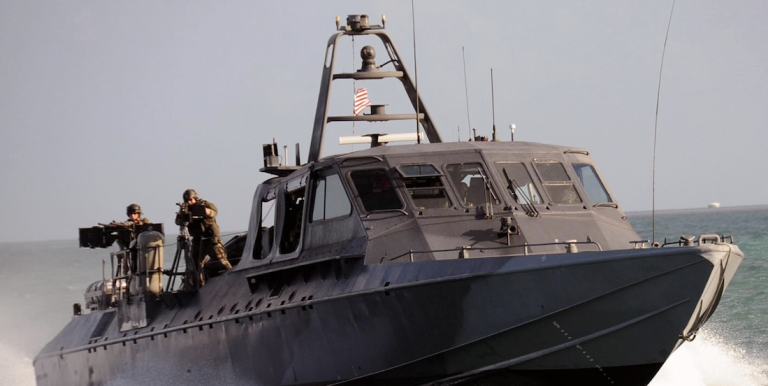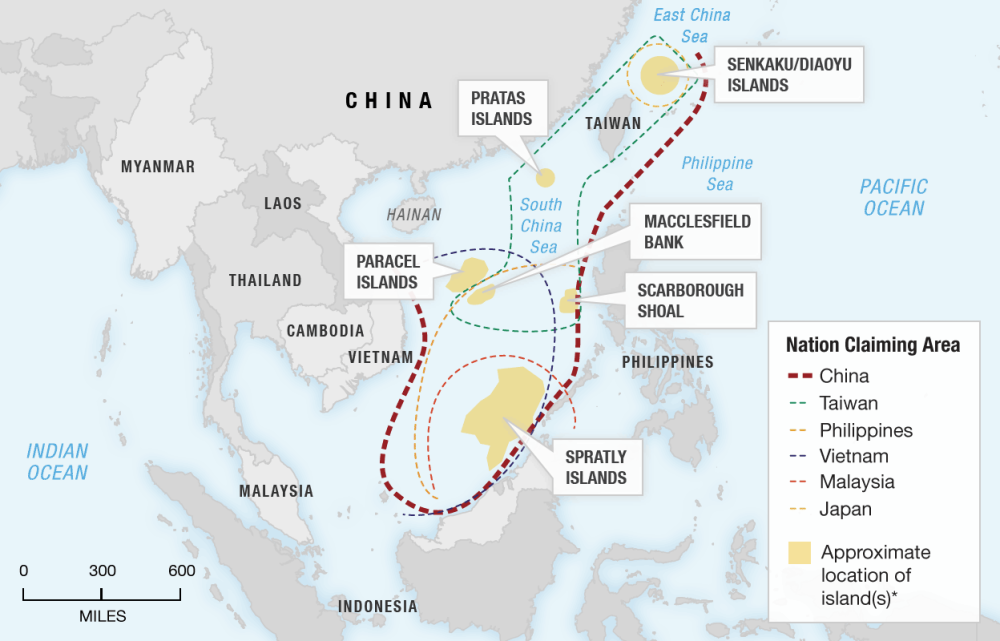
New Facility Signals Robust Response to Regional Tensions
New York, N.Y. –– The United States is set to fund and construct a boat maintenance facility on the western coast of Palawan, Philippines, to enhance the Philippine Navy’s operational capacity in the South China Sea. Announced on July 16, 2025, this project aims to support rapid deployment of Philippine vessels amid escalating confrontations with Chinese forces over disputed maritime territories.
The facility, located in Quezon municipality, approximately 160 miles east of the volatile Second Thomas Shoal, will house at least five fast boats, including assault boats and rigid-hulled inflatable boats, built by the U.S.-based company ReconCraft. This strategic move strengthens the U.S.-Philippine defense alliance and underscores a commitment to a free and open Indo-Pacific region.
Strategic Importance of Palawan’s New Base
The Palawan facility is strategically positioned to support Philippine operations in the South China Sea, a critical waterway where China claims nearly the entire region, despite an international ruling in 2016 declaring its assertions lack legal merit.
Palawan’s western coast, particularly Naval Detachment Oyster Bay, offers direct access to contested waters, unlike more distant bases like Puerto Princesa.

The new facility will include a 5-ton gantry crane for handling 24-foot watercraft, two multi-purpose rooms for equipment storage or conferences, and repairs to an existing boat launch to meet rapid deployment goals—enabling vessels to reach open water within 15 minutes.
This infrastructure will enhance Philippine maritime domain awareness and response capabilities against Chinese actions, such as ramming and water cannon attacks that have damaged Philippine vessels in 2023 and 2024.
The South China Sea remains a flashpoint for regional tensions, with Vietnam, Malaysia, Brunei, and Taiwan also staking claims. China’s deployment of its massive 165-meter “monster ship” to Scarborough Shoal in January 2025 and aggressive tactics, including physical ship contact and laser use, have heightened concerns.
The U.S. initiative aligns with the Philippines’ Self-Reliant Defense Posture Revitalization Act, prioritizing ship maintenance and unmanned systems to counter these challenges. The facility is expected to be operational by October 2026, marking a significant step in bolstering Philippine maritime security.
Deepening U.S.-Philippine Military Cooperation
Since President Ferdinand Marcos Jr. took office in 2022, U.S.-Philippine military ties have strengthened significantly. The U.S. has expanded access to Philippine military bases and deployed advanced systems, including four T-12 MANTAS and one Devil Ray T-38 unmanned surface vessels, to Oyster Bay.
These assets, combined with two Cyclone-class patrol ships transferred from the U.S. Navy in 2023, enhance Philippine capabilities in contested waters. Joint exercises, such as the Balikatan drill in 2025, where U.S. forces fired HIMARS rockets into the South China Sea from Palawan, demonstrate this robust partnership. The U.S. has also committed $500 million in Foreign Military Financing in July 2024 to support Philippine defense modernization.
U.S. Defense Secretary Pete Hegseth, during a 2025 visit to Manila, emphasized unmanned systems and rapid-response infrastructure as critical to countering Chinese aggression.
The 2025 Joint Vision Statement on U.S.-Philippine Defense Industrial Cooperation highlights these priorities, aiming to create a deterrent framework while preserving Philippine operational sovereignty. This cooperation reflects a broader U.S. strategy to counter China’s naval modernization, which boasts over 370 battle force ships, surpassing the U.S. Navy’s 296 as of September 2024.
Regional Reactions and Chinese Concerns
China has expressed apprehension about the U.S.-backed facility, with experts like Zhang Junshe warning of a potential “wolf pack strategy” where Philippine small boats could harass larger Chinese vessels. Beijing views the project as a provocative escalation, arguing it could destabilize the region.
Posts on X reflect polarized sentiments, with some users praising the U.S. for countering Chinese aggression, while others, like @wmhuo168, dismiss the facility as symbolic rather than strategic. Chinese state media, such as the Global Times, claim the U.S. is emboldening Philippine provocations, though China vows to maintain its territorial claims.
Philippine officials, however, emphasize the facility’s role in national defense. The Philippine Western Command, headquartered in Palawan, deploys patrol ships and aircraft to protect territorial interests. The new base will reduce reliance on distant repair facilities, enabling quicker responses to incidents like those at Second Thomas Shoal, where Chinese actions have damaged Philippine vessels.
The U.S. Embassy in Manila clarifies that the facility is not a military base but a maintenance hub approved by the Philippine government, adhering to local regulations.
Implications for Indo-Pacific Stability
The Palawan facility represents a calculated U.S. response to China’s growing naval dominance and assertive maritime tactics. By enhancing Philippine capabilities, the U.S. aims to deter Chinese expansion while reinforcing alliances with Japan, Australia, and other regional partners.
Joint patrols, such as those involving the Philippine ship BRP Valentin Diaz alongside U.S., Japanese, and Australian warships in November 2024, signal a unified front. However, the risk of escalation remains, as China’s exercises with its Liaoning and Shandong aircraft carriers near Japan and Guam demonstrate its intent to project power beyond the first island chain.
The U.S. initiative also navigates delicate domestic dynamics in the Philippines. While President Marcos has embraced closer ties with Washington, some Philippine voices remain wary of over-reliance on the U.S., recalling debates in 2014 about ceding Oyster Bay to American forces.
The project’s focus on Philippine vessels and local approval aims to balance sovereignty with alliance benefits. As the South China Sea remains a geopolitical tinderbox, the facility could reshape regional power dynamics, potentially deterring Chinese aggression or, conversely, prompting further confrontations.
Summary for audio file:
The United States is funding a boat maintenance facility in Palawan, Philippines, to bolster Philippine Navy operations in the South China Sea. Located near Second Thomas Shoal, the facility will support rapid deployment of fast boats to counter Chinese aggression. This move strengthens the U.S.-Philippine alliance, enhances maritime security, and responds to escalating regional tensions, with operations set to begin by October 2026.